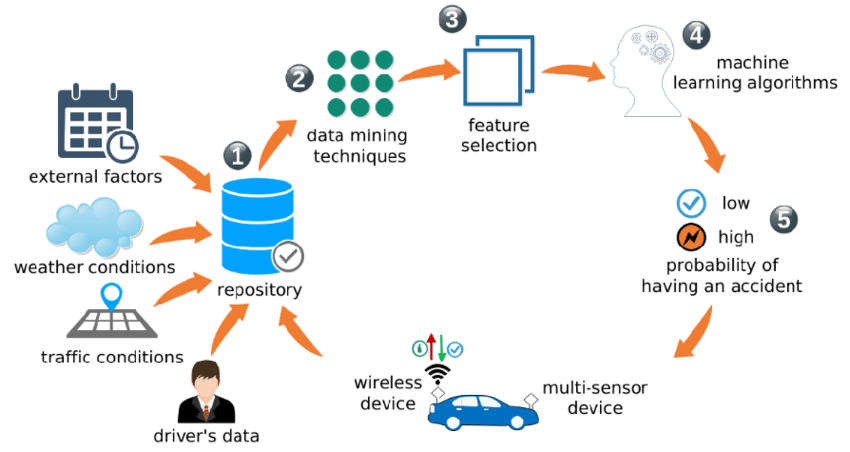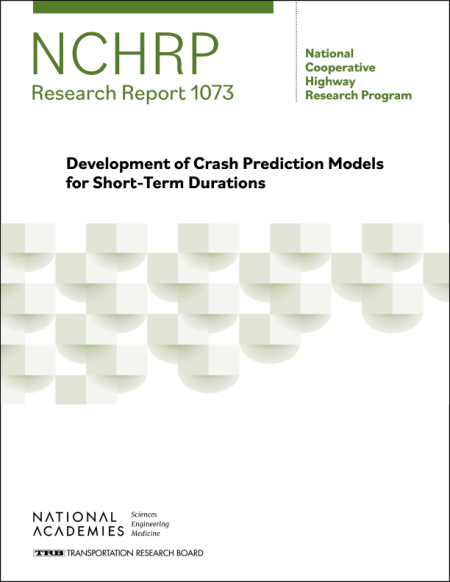Developing Crash Prediction Models
NCHRP's "Development of Crash Prediction Models for Short-Term Durations" provides roadway safety practitioners within state departments of transportation with short-term crash prediction models to be used for estimating safety performance.
Crash prediction methods, which are used to identify crash hotspots or crash severity, consist of safety performance functions (SPFs), crash modification factors, and severity distribution functions. These tools use annual average daily traffic data along with geometric and operational characteristics to predict the annual average crash frequency.
Crash prediction models have statistical value, however they do little to predict crashes for variable short-term periods often represented by temporary work zones, special events, or time-of-day capacity changes. Road safety practitioners require the means to better assess daily and hourly changes or changes attributed to special conditions, such as the implementation of active traffic management (ATM) strategies that could affect crash outcomes, help perform crash risk assessments, and provide effective countermeasures.
“Development of Crash Prediction Models for Short-Term Durations” evaluates high-resolution traffic data to obtain detailed microscopic flow information to (a) develop short-term crash prediction models to estimate the safety performance of roadways, (b) identify explanatory variables measured over short durations, and (c) develop an implementation tool suitable for practitioner use. Included are SPFs developed for all main-line freeway segment types (basic, weaving, merge, diverge, ramps) and different ATM scenarios, including high-occupancy vehicle (HOV) lanes, variable speed limit, hard shoulder running, high-occupancy toll lanes, ramp metering, and work zones.
Supplemental to the report are a Training Materials Presentation, a Webinar Presentation, crash-prediction data on Github, and a crash prediction tool and guide at AASHTO.
Who is NCHRP?
The National Cooperative Highway Research Program conducts research in problem areas that affect highway planning, design, construction, operation, and maintenance in the United States.
Administered under the Transportation Research Board (TRB), NCHRP is a collaborative effort between the Federal Highway Administration (FHWA) and the National Academy of Sciences.
Crash Prediction Modeling
Crash Prediction Models, also known as Safety Performance Functions, are statistical models predicting the likelihood of crashes on a certain roadway facility, as well as investigate the effect of various variables on the crash indicator.
Crash frequency per year and crash rates per million-vehicle mile traveled are the most common indicators of crash prediction models.


